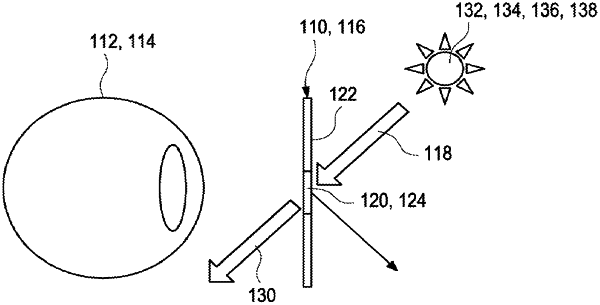| CPC G02C 7/027 (2013.01) [G02C 13/003 (2013.01); G02C 2202/20 (2013.01)] | 26 Claims |

|
1. A spectacle lens for at least one eye of a user, the spectacle lens comprising:
a lens body having at least one permanent marking, wherein the at least one permanent marking is or contains at least one diffractive structure, wherein at least one diffractive pattern generated by illumination of the diffractive structure is configured to be invisible upon a first kind of illumination and configured to be visible only upon a second kind of illumination, wherein being visible is a property of the at least one diffractive pattern of being perceived by the at least one eye of the user, and wherein being invisible is a property of the at least one diffractive pattern of not being perceived by the at least one eye of the user,
wherein the at least one diffractive pattern is configured to be visible only under illumination in at least one of a near-infrared spectral region and a near-ultraviolet spectral region, wherein the at least one permanent marking is configured to provide information about at least one of a location on the lens body, and wherein the information about the at least one location on the lens body is selected from at least one of:
a distance reference point;
at least one near reference point;
a fitting cross;
a prism reference point; and
an alignment reference marking.
|